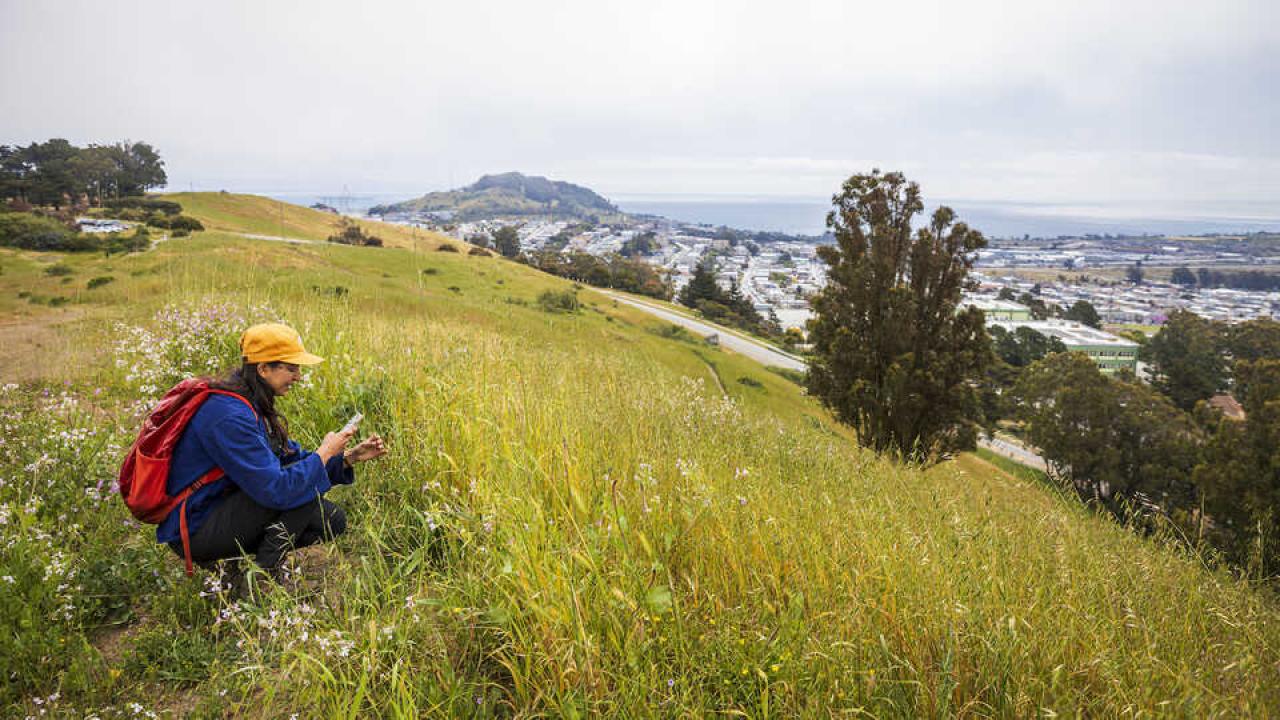What is a bioblitz?
The bioblitz as a unique biological survey encourages a relationship between the natural and human communities since citizens work alongside scientists to learn about the biological diversity of local natural spaces. In the process, they gain skills and knowledge and develop a stronger connection to their home environment. A bioblitz aims to promote and improve local natural spaces by empowering citizens to better understand and protect biodiversity.
The first bioblitz was sponsored by the National Park Service and the National Biological Service in Washington, D.C.'s Kenilworth Park and Aquatic Gardens in 1996. Surrounded by heavy residential and industrial development, Kenilworth Park was thought to have very little biological diversity. Scientists, however, tallied more than 900 species that first year and added even more species to their list at successive Kenilworth bioblitzes. Hundreds of bioblitzes have been conducted all over the world, primarily in the United States, Canada, Australia, the United Kingdom, and Europe and through the City Nature Challenge bioblitz has become an international activity.
What is the City Nature Challenge (CNC)?
Invented by community science staff, Lila Higgins at the Natural History Museum of Los Angeles County (NHM) and Alison Young and Rebecca Johnson at the California Academy of Sciences (CAS), the City Nature Challenge is an international effort for people to find and document plants and wildlife in cities across the globe. It’s a bioblitz-style competition where cities are in a friendly contest with each other to see who can make the most observations of nature, who can find the most species, and who can engage the most people.
In its first year (2016, a competition between Los Angeles and San Francisco), over 20,000 observations were made by more than 1,000 people in one week, cataloguing approximately 1,600 species in each location, including new records for both areas. During the 2016 CNC, there was so much excitement and interest from people in other cities that the organizers knew they couldn’t keep the fun just to themselves. In 2017 the City Nature Challenge went national, and in 2018, the CNC became an international event! In 2023 almost 550 cities joined the global contest.
For 2024 CNC has become the largest citizen science initiative: more than 83,000 people in 690 cities in 51 countries on all 7 continents documented more than 2.4 million observations of flora and fauna, identifying more than 65,682 species, during the ninth edition of the City Nature Challenge. Results of the 2024 event can be found here. Out of 14 participating Italian cities, Siena ranked: 5th in Italy for total number of observations (1636), 3rd for total number of species observed (666) and 5th for total number of observers (63).
How to organise a bioblitz within (or separately from) the City Nature Challenge?
A contest or a game? CNC (as well as every bioblitz) is a friendly and flexible “contest” since an urban area cannot compete with a natural area in terms of the number of species, while it is much easier to involve more people in cities than in a natural park. It is a citizen science as well as an awareness-raising tool.
Timeframe: the CNC usually runs 4 days at the end of April each year. It consists of two stages: 1. taking pictures of wild plants and animals during the first days, and then 2. identifying what was found. Results were published on 6 May. All participating cities can decide how they organise the event within the timeframe (4 days) given by the international organisers. If the bioblitz is not organised within the CNC, it is usually organised within 24 hours, the CNC neither requires using all 4 days (however, it might be important to plan an option B in case of rain for instance).
Location: it is up to the organisers, but the area involved is not necessarily the entire city, it can be a neighbourhood, a park, or another green area, and can be changed year by year. In 2024 Siena focused on a valley (Valle di Follonica) within the historic walls, 5-8 hectares in total. Both from scientific and awareness-raising aspects, the goal is to map and study new areas, and it might lead to new collaborations (with private owners, institutional gardens, etc). There is no specific request from CNC organisers to plan indicators (number of locals involved, size of the territory).
Observation and validation of records: CNC recommends using the easy-to-use and free-of-charge app iNaturalist (available in various languages). Different invited experts guide and help citizens in observations and later on validate the records. In Siena 5816 observations were made and 1400 species were identified in the three CNCs (2022, 2023 and 2024). Scientific data is available for everyone, but sharing feedback with the wider community is also important.
Preparation: by filling in a simple form sign up today for the 2025 CNC event if you are interested! Preparation starts in September with webinars and training. The first year needs more time for preparation.
Logistics: a bioblitz can be a great community action, but it requires some additional organisation. You will need volunteers who help scientists and community members take inventory at a bioblitz. Depending on the location and the size of the community event you plan along the bioblitz you might think about organisation of education programs on the spot, traffic/parking control, information stations, registration, delivering food to staff, shuttling supplies, technology support staff, set-up and take down, facility management help, security. In Siena generally 5 staff members, 5-10 collaborators and 10-20 voluntary experts are involved.
Participants: there is no requirement how to involve locals, but it is a great opportunity for school groups and families. You can count on university students and volunteers. The person uploading the most pictures is usually awarded, but other rewarding schemes might help engagement. In Siena ca. 200 participants take place in a bioblitz in 24 hours.
Organiser: in Siena the Museo di Storia Naturale is the organiser, initiators can be associations, universities, as well as municipalities.
Costs: it also depends on the location and the size of the community event you plan along the bioblitz (joining to CNC is free of charge). You will need some equipment for on-the-spot educational activities and validation (e.g. microscope), refreshments and tents at the base camp, and mobile toilets.
Communication is key, but usually it has no additional costs, efficient event promotion can be done through existing social media channels.


